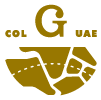Cuts
-
 Brisket
Brisket Type of cutThird category cuts, have large amounts of connective tissue,fat and bone, often in greater quantity in relation to muscle tissue.
Type of cutThird category cuts, have large amounts of connective tissue,fat and bone, often in greater quantity in relation to muscle tissue.
 Third category cuts, have large amounts of connectivetissue, fat and bone, often in greater quantityin relation to muscle tissue.
Third category cuts, have large amounts of connectivetissue, fat and bone, often in greater quantityin relation to muscle tissue. -
 Plate/ Flank
Plate/ Flank Type of cutThird category cuts, have large amounts of connectivefat and bone, often in greater quantity in relation to muscle tissue.
Type of cutThird category cuts, have large amounts of connectivefat and bone, often in greater quantity in relation to muscle tissue. Third category cuts, have large amounts of connective tissue,tissue, fat and bone, often in greater quantityin relation to muscle tissue.
Third category cuts, have large amounts of connective tissue,tissue, fat and bone, often in greater quantityin relation to muscle tissue. Plate/Flank
Plate/Flank -
 Round/
Round/ Type of cutSecond category cut that also possess a good amount of muscletissue in relation to connective and fatty tissue, and bone.
Type of cutSecond category cut that also possess a good amount of muscletissue in relation to connective and fatty tissue, and bone.
 ShankSecond category cut that also possess a goodamount of muscle tissue in relation to connectiveand fatty tissue, and bone.
ShankSecond category cut that also possess a goodamount of muscle tissue in relation to connectiveand fatty tissue, and bone. -
 Rib
Rib Type of cutThird category cuts, have large amounts of connective tissue,fat and bone, often in greater quantity in relation to muscle tissue.
Type of cutThird category cuts, have large amounts of connective tissue,fat and bone, often in greater quantity in relation to muscle tissue.
 in relation to muscle tissue.tissue, fat and bone, often in greater quantityThird category cuts, have large amounts of connective
in relation to muscle tissue.tissue, fat and bone, often in greater quantityThird category cuts, have large amounts of connective -
 Chuck
Chuck Type of cutSecond category cut that also possess a good amount of muscletissue in relation to connective and fatty tissue, and bone.
Type of cutSecond category cut that also possess a good amount of muscletissue in relation to connective and fatty tissue, and bone.
 Second category cut that also possess a goodamount of muscle tissue in relation to connectiveand fatty tissue, and bone.
Second category cut that also possess a goodamount of muscle tissue in relation to connectiveand fatty tissue, and bone. -
 Sirloin
Sirloin Tipo de corteFirst category cut from the middle part of thethe loin. It’s meat is soft and lean, and in premium
Tipo de corteFirst category cut from the middle part of thethe loin. It’s meat is soft and lean, and in premium cattle, veined with fat.
cattle, veined with fat. First category cut from the middle partof the animal, the loin. It’s meat is softand lean, and in premium cattle,veined with fat.
First category cut from the middle partof the animal, the loin. It’s meat is softand lean, and in premium cattle,veined with fat. -
 Loin/
Loin/ Type of cutFirst category cut from the middle part of thethe loin. It’s meat is soft and lean, and in premium
Type of cutFirst category cut from the middle part of thethe loin. It’s meat is soft and lean, and in premium cattle, veined with fat.Tenderloin
cattle, veined with fat.Tenderloin First category cut from the middle partof the animal, the loin. It’s meat is softand lean, and in premium cattle,veined with fat.
First category cut from the middle partof the animal, the loin. It’s meat is softand lean, and in premium cattle,veined with fat.



